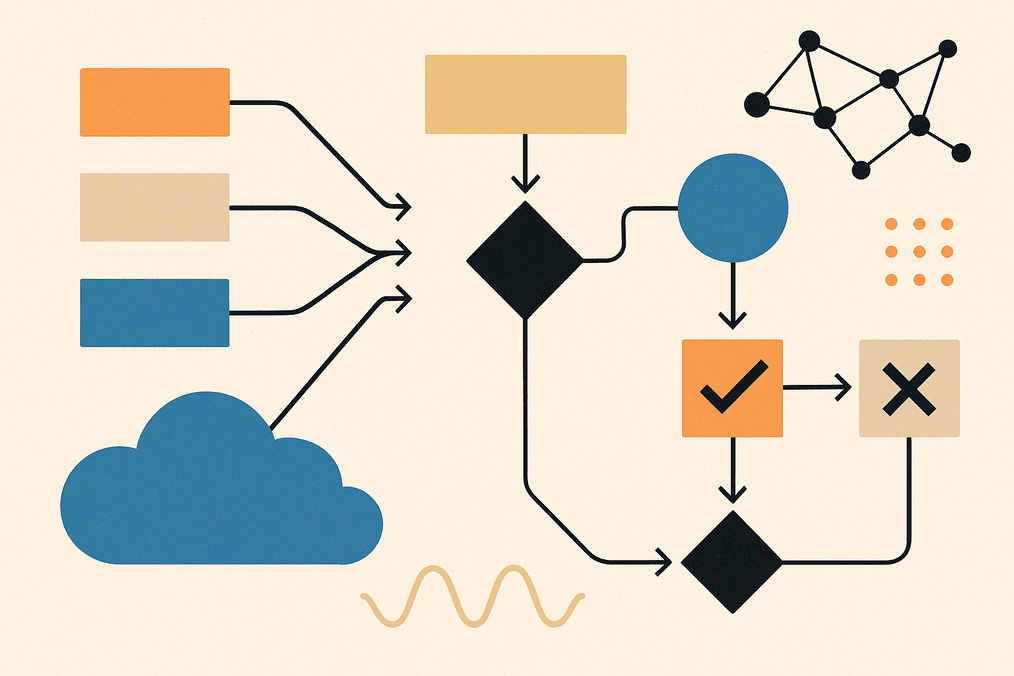When writing an application, there are various ideologies to consider. Some of which include how the application will run, components to use to build the application such as database technology, programming language and internal architecture of the application. The different functions of the application and how they will interconnect to perform actions. All these are considered during the development phase of an application. A major implementation that is usually considered is the model of deploying the application. Is the application going to run as a single unit ? Will it be divided into individual components that perform specific tasks ?
For instance, an e-commerce app is made up of different components;
- User Management (Sign In / Sign Up)
- Shopping Catalog
- Shopping Cart
- Payment System
- Email System
Each of these components have a specific task they perform, but they are related to give the user a good experience when navigating our e-commerce app and shopping for an item or items on the website. Lets say we choose to separate each of these components. This means that they have to be managed separately, and they also need to be able to communicate with each other to exchange information needed at different stages. This method of running applications is called Microservices.
What are Microservices ?
Microservices architecture is a modern approach to software development where an application is broken down into smaller, independent services that communicate with each other via lightweight protocols such as HTTP APIs or messaging queues. Unlike monolithic architectures, where all functionalities are tightly integrated into a single codebase, microservices allow for greater flexibility, scalability, and maintainability.
it can also be defined as?
A modern approach to designing and building software applications as a collection of small, independent, and loosely coupled services. Each service is responsible for a specific business capability and can be developed, deployed, and scaled independently. This architecture has gained popularity due to its flexibility, scalability, and ability to support continuous delivery.
Components of a Microservice
For a microservice to function appropriately, there are major components they are made of. These components ensure the microservice architecture is able to deliver on its promises of small, independent and being loosely-coupled. At its core is the business logic, which implements the service’s primary functionality, such as processing payments or managing user accounts, using programming languages like Java, Python, or Go. The API Gateway serves as a single entry point for clients, handling routing, load balancing, and authentication to streamline interactions with microservices. Each microservice maintains its own database to ensure loose coupling, allowing different services to use databases tailored to their needs, such as MySQL for a User Service or MongoDB for a Product Service. Service Discovery tools like Consul, Eureka, or Kubernetes Service Discovery enable microservices to locate and communicate with each other seamlessly. Communication between services occurs through protocols like HTTP/REST for simplicity, gRPC for high-performance interactions, or message queues like RabbitMQ and Kafka for asynchronous communication. To ensure reliability and performance, monitoring and logging tools such as Prometheus, Grafana, and the ELK Stack are used to track service performance and diagnose issues. Finally, microservices are often containerized using tools like Docker to ensure consistency and portability across different environments, making deployment and scaling more efficient. Together, these components form the foundation of a robust and scalable microservices architecture.
Core Principles of Microservices Architecture
To ensure an application follows the microservice approach, there are some guidelines that need to be followed in the development and deployment of a microservice. Not following these guiding principles leads to an anti-pattern of this deployment model, thereby not reaping the full benefits it has to offer. Here are a few of the core guiding principles of a microservice-based application.
Single Responsibility Principle
Each microservice should be designed to focus on a single business capability, ensuring modularity and independence. By adhering to this principle, services remain loosely coupled and easier to manage, scale, and update. For example, a payment service should exclusively handle payment processing, while a separate authentication service manages user authentication, preventing unnecessary dependencies and improving system maintainability.
Decentralization
Microservices should be autonomous and independently deployable, allowing teams to develop, test, and deploy services without impacting others. To maintain this independence, shared databases should be avoided, as they create tight coupling between services and hinder scalability. Instead, each microservice should manage its own database, ensuring data isolation and enabling seamless updates and scaling without dependencies on other services.
API-first Design
Designing clear and consistent APIs is essential for effective communication between microservices, ensuring interoperability and ease of integration. Well-defined APIs help standardize interactions, reduce errors, and improve maintainability. To facilitate this, tools like Swagger and OpenAPI can be used for API documentation, providing a structured and interactive way to describe endpoints, request formats, and response structures, making it easier for developers to understand and use the services efficiently.
Fault Tolerance
Microservices should be designed to handle failures gracefully by implementing strategies such as retries, timeouts, and circuit breakers to prevent cascading failures. By anticipating potential issues, services can maintain availability and resilience even during partial outages or high loads. Tools like Hystrix and Resilience4j provide fault tolerance mechanisms, allowing services to detect failures, limit retries, and fallback to alternative responses, ensuring a more robust and reliable system.
Continuous Delivery
Automating testing, deployment, and monitoring is crucial for enabling frequent and reliable releases in a microservices architecture. By implementing continuous integration and continuous deployment (CI/CD) pipelines, teams can streamline the development process, quickly detect issues, and ensure consistent deployments. Tools like Jenkins, GitLab CI, and CircleCI help automate build, test, and deployment workflows, reducing manual effort and improving software quality while allowing for faster iteration and delivery.
Scalability
Microservices should be designed to scale independently based on demand, ensuring optimal resource utilization and performance. By leveraging horizontal scaling, services can handle increased traffic by adding more instances rather than overloading a single one. This approach enhances high availability and fault tolerance, allowing the system to distribute workloads efficiently. Scaling strategies can be automated using container orchestration tools like Kubernetes or cloud-based auto-scaling solutions to dynamically adjust resources as needed.
Observability
Monitoring and logging service performance are essential for detecting and resolving issues quickly in a microservices architecture. By continuously tracking metrics, logs, and system health, teams can identify performance bottlenecks, troubleshoot failures, and optimize services proactively. Tools like Prometheus and Grafana provide real-time monitoring and visualization, while the ELK Stack (Elasticsearch, Logstash, and Kibana) enables centralized log aggregation and analysis, ensuring better observability and system reliability.
Security
Ensuring secure service-to-service communication in a microservices architecture requires robust authentication and authorization mechanisms. Implementing protocols like OAuth2 and JWT helps verify identities, control access, and protect sensitive data. OAuth2 enables secure token-based authentication, while JWT (JSON Web Token) facilitates lightweight, stateless authorization between services. By enforcing these security measures, microservices can prevent unauthorized access, enhance data integrity, and maintain compliance with security best practices.
Deployment Models of a Microservice
Microservices can be deployed in various ways. There are multiple options and tools both in the Cloud and OnPremise that can be used to deploy and run an application using the microservices model. They are:
Container-based Deployment
Docker packages microservices into containers, ensuring consistency across different environments, while Kubernetes orchestrates the deployment, scaling, and management of these containers. Together, they provide a powerful solution for running microservices efficiently. For example, a microservice can be packaged as a Docker container and deployed within a Kubernetes cluster, enabling seamless scaling, fault tolerance, and automated management.
Serverless deployment
AWS Lambda and Azure Functions enable running microservices without the need to manage servers, providing a serverless computing environment that automatically scales based on demand. For example, a payment service can be deployed as an AWS Lambda function, allowing it to process transactions efficiently while only consuming resources when triggered, reducing operational overhead and costs.
Virtual Machines
Microservices can be deployed on virtual machines such as AWS EC2 or Azure VMs, providing dedicated computing resources for each service. This approach allows for greater control over configurations, networking, and security. For example, a user authentication service can run on an EC2 instance, ensuring scalability and isolation while maintaining flexibility in resource management.
Platform as a Service
Platforms like Heroku and Google App Engine simplify microservice deployment by handling infrastructure management, scaling, and maintenance. These Platform-as-a-Service (PaaS) solutions allow developers to focus on code rather than server configurations. For example, a recommendation service can be deployed on Heroku, automatically scaling to handle varying workloads while minimizing operational overhead.
Real-world Applications
Netflix (Streaming Service)Netflix operates on a microservices architecture to handle different functionalities:
- User Authentication: A dedicated authentication microservice verifies user credentials.
- Movie Catalog Service: Fetches available content based on user location and preferences.
- Recommendation Engine: Uses AI and user behavior to suggest content.
- Billing & Subscription Service: Manages user payments and invoices.
Amazon (E-Commerce Platform)Amazon leverages microservices to manage:
- Product Catalog Service: Retrieves product details and availability.
- Order Processing Service: Handles customer orders and transactions.
- Shipping Service: Manages logistics and real-time delivery tracking.
- Payment Service: Ensures secure online payments.
Uber (Ride-Sharing App)Uber’s microservices architecture includes:
- User Management Service: Manages rider and driver profiles.
- Driver Matching Service: Connects passengers with nearby drivers.
- Pricing Engine: Calculates ride fares based on demand and location.
- Notification Service: Sends ride updates and alerts.
Each of these services is loosely coupled, ensuring uninterrupted functionality even if one service experiences downtime.
Conclusion
Microservices architecture is a transformative approach to building scalable, flexible, and resilient applications by breaking them into smaller, independent services.
This enables faster development, efficient scaling, and adaptability to changing business needs, as demonstrated by industry leaders like Netflix, Amazon, and Uber.
However, adopting microservices introduces complexities in deployment, monitoring, and communication, necessitating adherence to best practices and guiding principles such as API-first design, fault tolerance, and observability.
Organizations must carefully evaluate their business requirements and operational capabilities to successfully implement microservices and achieve agility, scalability, and reliability.



